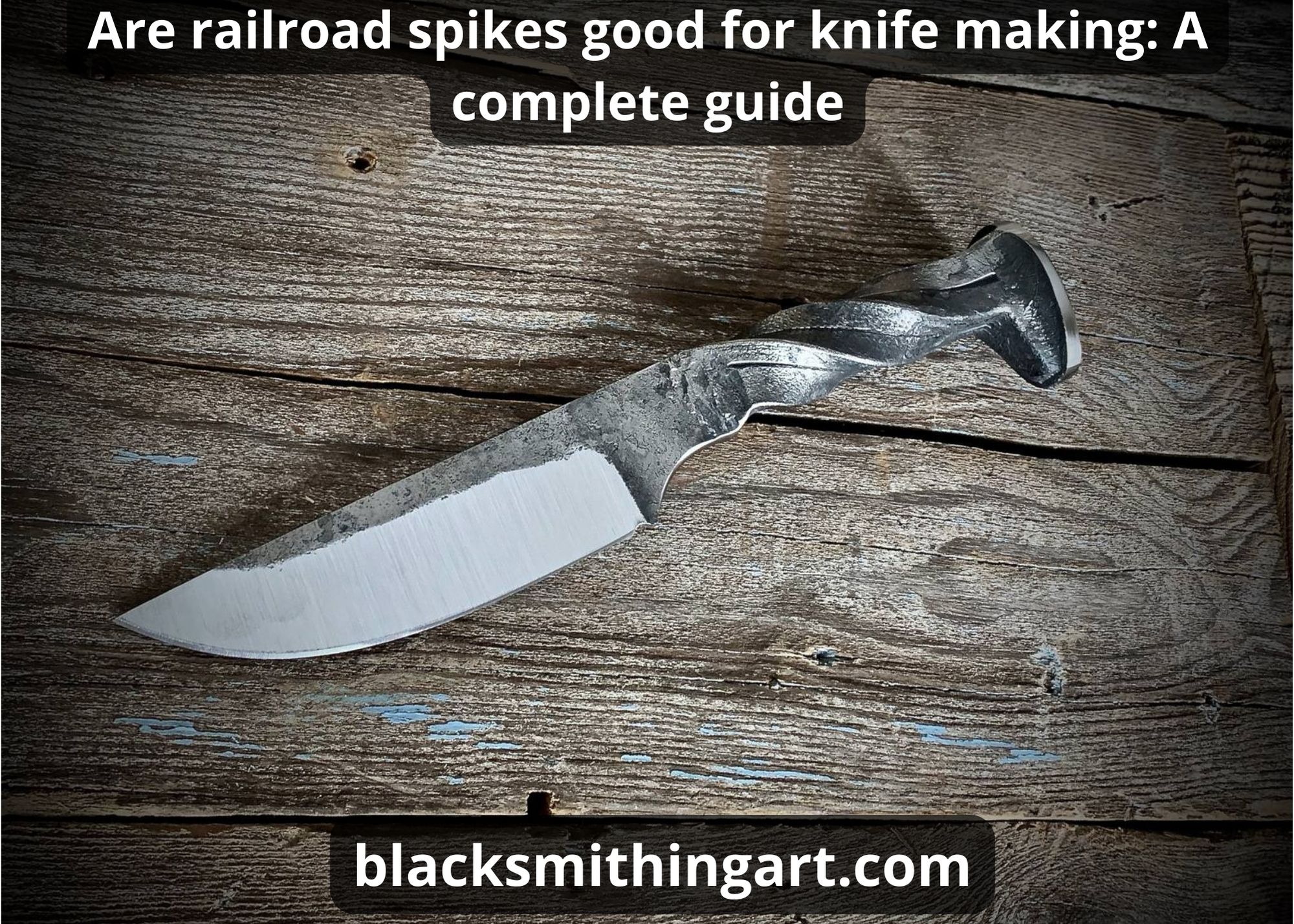A railroad spike is a readily available supply of high-carbon mild steel that can be used for a variety of blacksmithing tasks, including the creation of knives.
These spikes can vary in quality and consistency depending on their source and condition, therefore blacksmiths and knife makers disagree on whether they are suitable for manufacturing knives.

It’s crucial to understand the characteristics of these spikes in this situation and how they might be applied to projects involving the creation of spike knives.
In this article, we will weigh the benefits and drawbacks of employing spikes to make spike knives and offer a fair assessment of their applicability and efficacy. I hope this complete guide will be interesting and informative for you to read.
Contents
- 1 Characteristics of railroad spikes
- 2 Types of railroad spike knives
- 3 How to make a railroad spike knife
- 4 Advantages to using spikes for making knives
- 5 Disadvantages to using spikes for making knives
- 6 Things to consider before using railroad spikes to make knives
- 7 Conclusion
- 8 FAQ
- 8.1 Can you make knives out of railroad spikes?
- 8.2 Is railroad track steel good for knives?
- 8.3 How long does it take to forge a knife from a railroad spike?
- 8.4 Are railroad spikes good for blacksmithing?
- 8.5 Can low-carbon railroad spikes be used to make knives?
- 8.6 Where to find railroad spikes for constructing knives?
- 8.7 What to avoid while selecting steel for producing knives?
Characteristics of railroad spikes
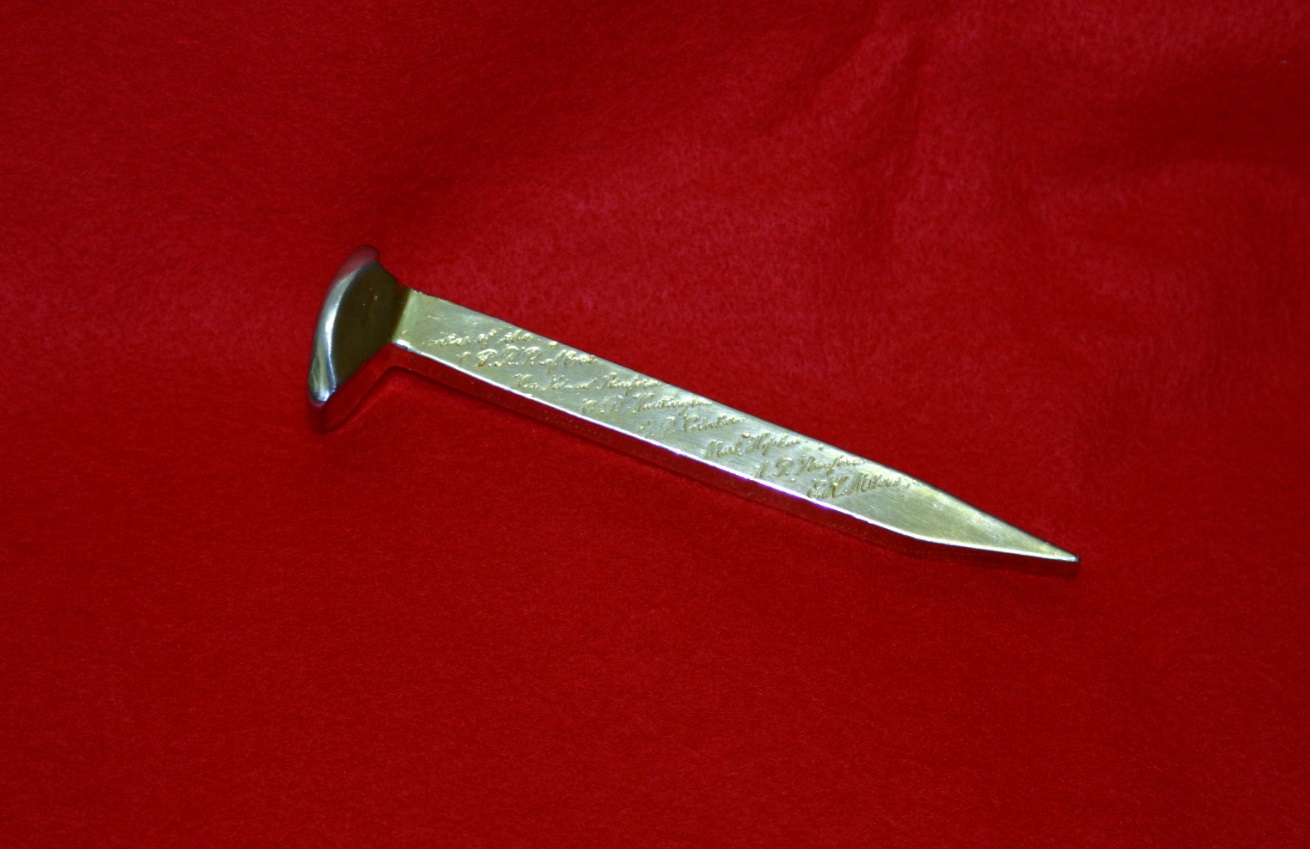
The railroad spike and its unique properties might change depending on factors like its source and condition. When employing them to make spike knives, it’s important to consider a few important factors, such as:
High carbon content
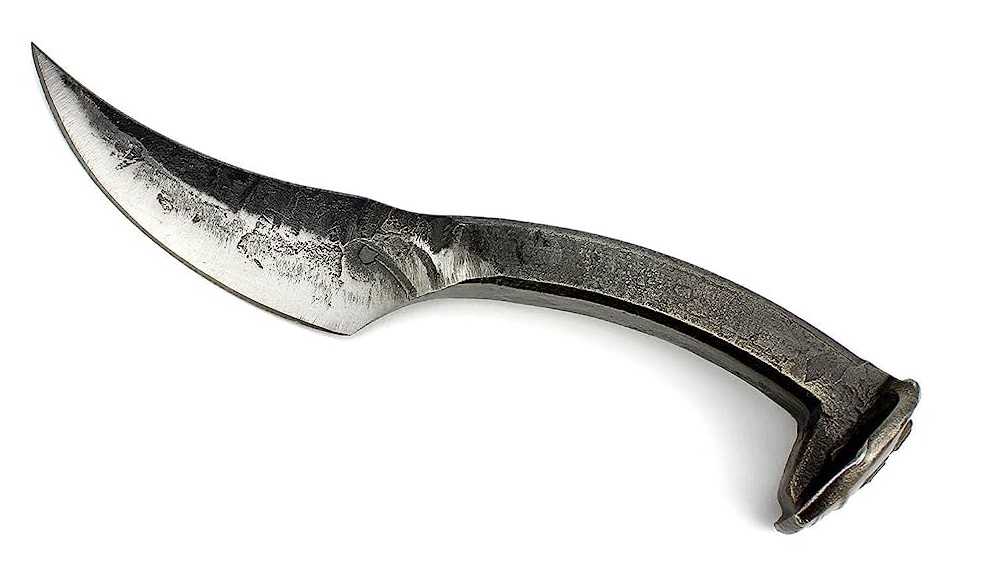
They often have a high carbon percentage of 0.6-0.8%, which can make the steel strong and durable. However, the exact carbon content can change depending on the spike’s origin and age.
Alloying elements
They may also contain alloying components like silicon and manganese, which can change the steel’s characteristics and ability to operate well as a knife blade.
Robustness
They are typically strong and long-lasting, which might result in a blade material that can resist heavy use.
Hardness
Although they can be made more durable through heat treatment, they might not be as durable or resistant to wear as some other kinds of steel that are frequently used to make knives.
Consistency and quality
Depending on the origin, age, and condition, the railroad spike consistency and quality might change. Some spikes may have seen years of degradation on the tracks, which may have an impact on their characteristics and suitability for use in the manufacture of spike knives.
Even though they can be used to make spike knives, it’s crucial to thoroughly consider their unique qualities and capabilities before choosing to use them for a project.
Types of railroad spike knives
Whether these spikes are brand-new or used, they can be used to create a variety of knives. Here are a few examples:
A full-tang knife: It has a single railroad spike serving as both the handle and the blade. The spike is heated, fashioned into a handle and blade by hammering, and then polished. The blade’s tang extends through the entire handle and is held in place with pins or rivets.
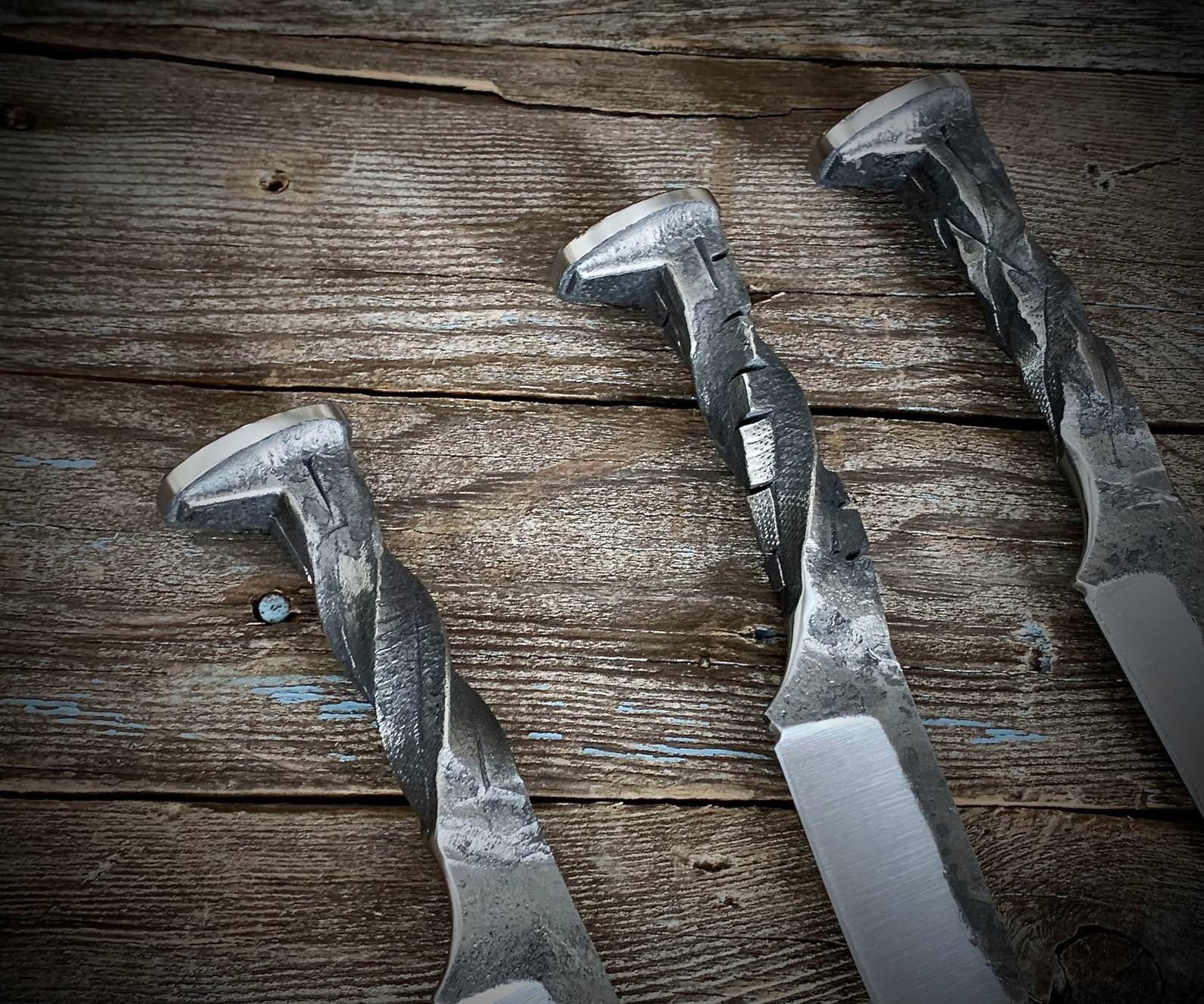
Hidden tang knife: A knife with a hidden tang is one in which the handle and blade are created independently and the tang of the blade is hidden inside. A separate handle material (such as wood or bone) is bonded to the tang using epoxy or other adhesives after the spike is heated, hammered, and formed into the blade.
Damascus knife: A railroad spike is mixed with different types of steel to form a patterned or layered blade for the Damascus knife. A beautiful and distinctive blade is made by heating, hammering, and twisting the spike to make a pattern, and then forge welded with other kinds of steel.
Bowie knife: A large knife with a crossguard and a clip-point blade is known as a bowie. The blade and crossguard can be made of these spikes, and different handle materials, like bone or wood, can be fastened with pins or rivets.
The Forrest bowie did not have a crossguard or clip point, unlike the Fitzpatrick, Schively, and other confirmed “Bowies” of the time.
These features may have been added by Sheffield knives imported in the 1830s and 1840s, although their exact origins are unknown. The contemporary form of Bowie that is most frequently seen now was made popular by the knives used in 1950s films and TV shows.

Regardless of the actual circumstances or the design of the original weapon, the Bowie knife has earned a place in American folklore and is one of the most well-known knives ever. Over the past 180 years, countless Bowie knives have been produced and sold.
Most fixed-blade knife collectors have at least one in their collection, and almost all knifemakers have produced one. Because of this, the Bowie knife is deserving of its place as one of the most well-known and most imitated knives in history.
Chef’s knife: This multipurpose kitchen tool is used for dicing, chopping, and slicing. The spikes can be used to make the blade, and epoxy or other adhesives can be used to connect a different handle material (such as wood or synthetic material).
How to make a railroad spike knife
For individuals who are interested in blacksmithing and knife manufacturing, crafting a railroad spike knife can be a satisfying and enjoyable project. The fundamental procedures for creating a railroad spike knife are as follows:
Choose your supplies: A high-carbon railroad spike, a forge, an anvil, a hammer, and other blacksmithing equipment are required.
Heat the spike: In the forge, heat the spike with a higher carbon level until it reaches a working temperature. It should be close to 2,000 degrees Fahrenheit.
Construct the blade: Forge the spike into a knife blade with the anvil and hammer. To achieve the desired shape, the forged blade spike will need to be hammered, shaped, and ground.

Harden the blade: To harden the steel, heat the blade to a critical temperature and then quench it in oil or water. The blade will become stronger and more resilient as a result.
Temper the blade: Temper the hardened metal blade by heating it a second time at a lower temperature. This will lessen the blade’s brittleness and increase its likelihood of breaking.
Create the handle: You can shape the handle out of the same piece of steel as the blade if you are building a full-tang knife. Constructing a hidden-tang knife requires constructing a separate handle out of a material (such as wood or bone) and joining it to the tang with epoxy or another adhesive.
Polish and sharpen the blade: The blade should be polished and sharpened using a grinding wheel or sandpaper. The knife will then be prepared for usage.
These are the fundamental procedures for creating a high-carbon railroad spike knife. The creation of knives and blacksmithing are complicated trades that require practice and expertise to master. It could be beneficial to take a lesson or get advice from an expert if you are new to blacksmithing or producing knives.
Because it is more durable, affordable, weldable, and corrosion-resistant, mild steel is preferred by railroads for use in the construction of train tracks and other infrastructure.
However, it is frequently chosen over other materials when creating knives because it has unique qualities that make it more appropriate for this function.
The railroads prefer mild steel that will flex rather than break. A broken spike cannot support a rail; a bent spike may.
Advantages to using spikes for making knives
Availability: Railroad spike is widely available and reasonably priced, making it a popular option for novices and enthusiasts looking to improve their blacksmithing and knife-making abilities.
Durability: Enough carbon steel content, which is generally used to build spikes, may be toughened and tempered to create a good railroad spike knife blade steel that can survive heavy use.

Toughness: They can be utilized to make strong knife blades that can perform a variety of chopping and cutting activities because they are often quite tough.
Recycling: Making railroad spike knives out of railroad material involves reusing a resource that would otherwise be thrown away.
Disadvantages to using spikes for making knives
Quality: Not all railroad spikes are manufactured of good steel, and some may have endured years of use on the tracks, which may have an impact on their characteristics and usefulness for forging knives.
Railroad spike quality and consistency can vary depending on where they come from and how well they are maintained. Because of this, it may be challenging to determine how they will function as knife blades.
Hardness: Although they can be made more durable through heat treatment, they might not be as durable or resistant to wear as some other kinds of steel that are frequently used to make railroad spike knives.
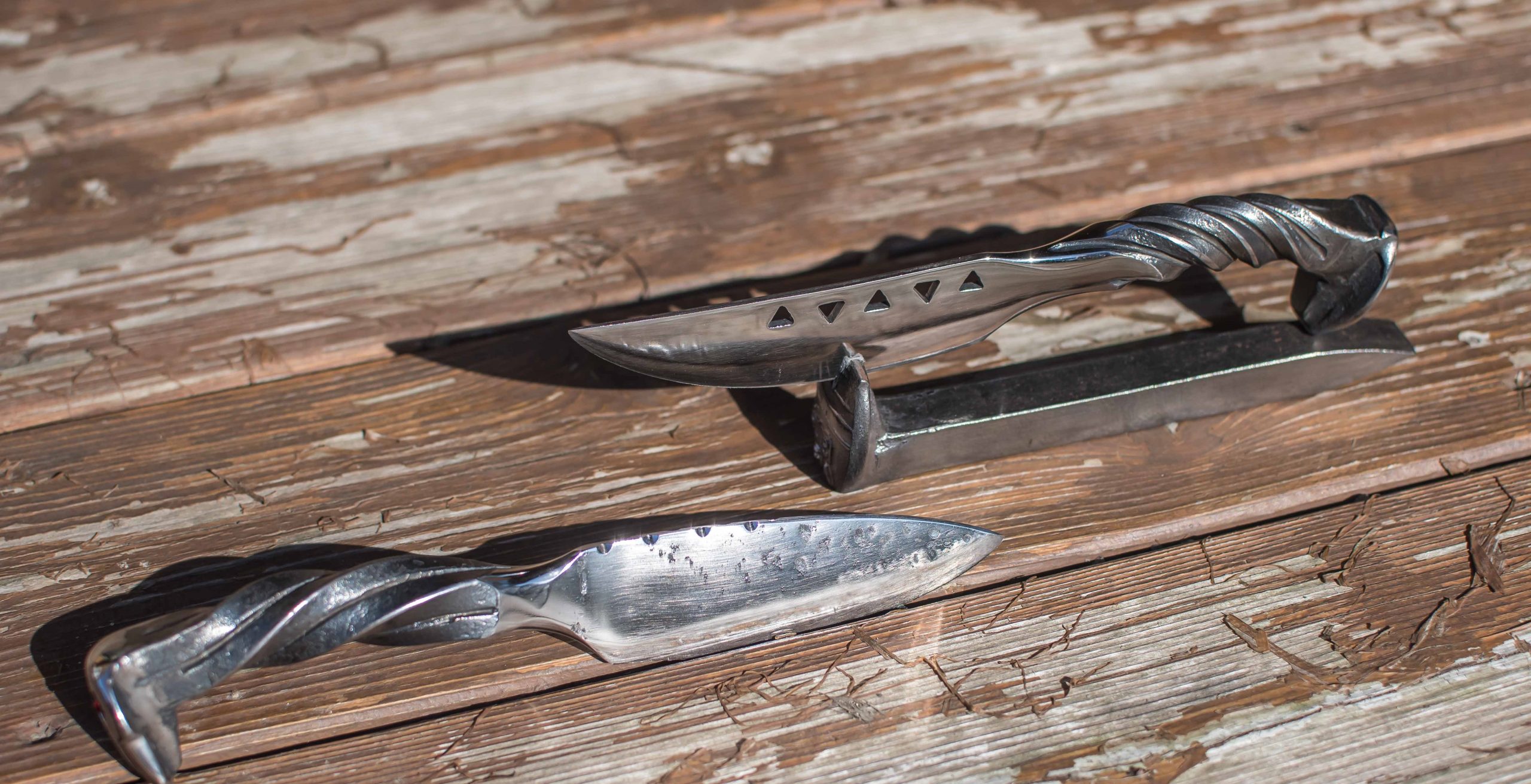
Design limitation: They can only be used for certain RR spike knife designs or applications because of the rail spike distinctive size and shape.
The individual project, the blacksmith’s level of skills, and their preferences will all influence whether RR spikes are used to make great knives.
However, RR spikes’ quality and consistency might vary, and they might not be as hard or wear-resistant as some other forms of steel. Despite this, they can be a viable material for producing robust, long-lasting spike knife blades.
Things to consider before using railroad spikes to make knives
Before you start your project, there are a few things to consider if you plan to make knives out of the spikes. Here are some important things to think about:
Consistency: Railroad spike quality and consistency can vary depending on where they come from and how properly they are preserved. Because of this, it may be challenging to forecast how they will function as knife blades. To guarantee consistency in your project, consider employing spikes from a single source or batch.
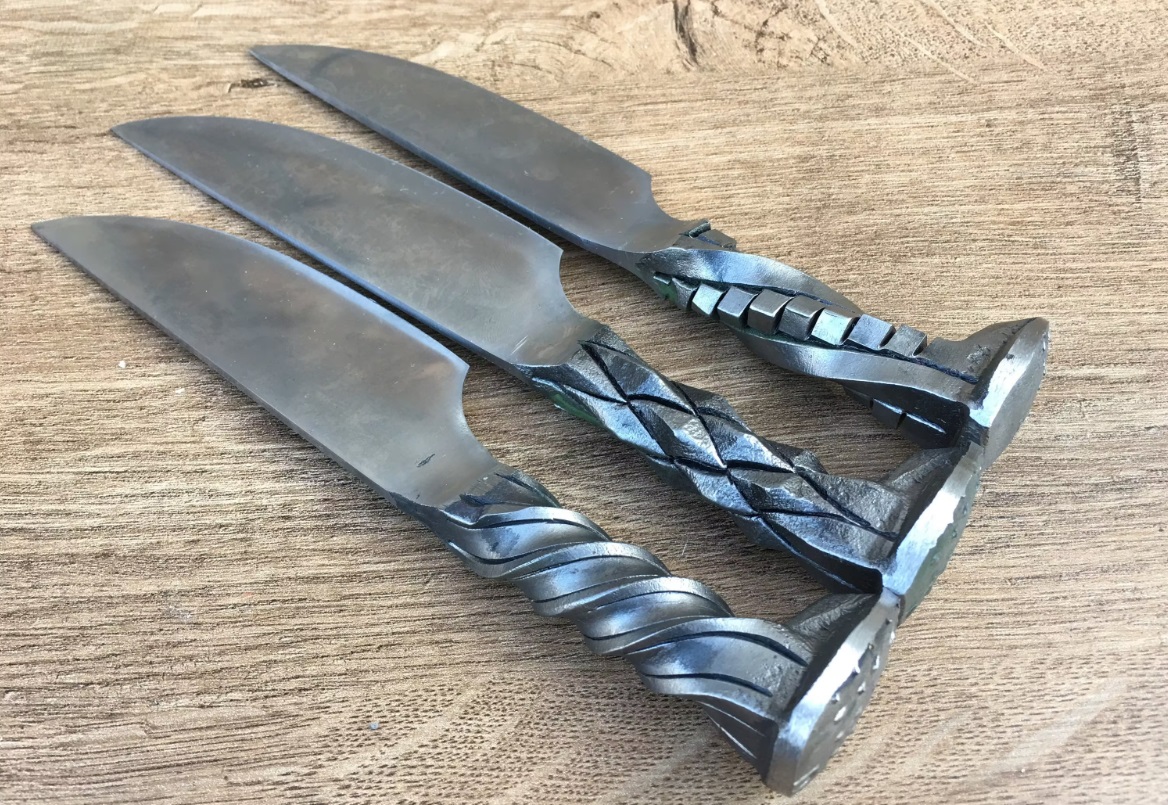
Design: They are only usable for some knife designs or applications due to their different size and shape. You should think about how the knife’s design will interact with the spikes’ size and shape.
Heat treatment: To harden and temper, you have to heat treat the steel to create a strong and long-lasting railroad spike knife blade. Make sure you have the right tools and know-how to correctly heat treat the good steel by thinking about the heat treatment procedure.
Safety: Blacksmithing may be a serious activity. Make sure you have the right safety gear and the skills to work with red-hot metal and cutting tools before you start your job.
Before you begin your project, carefully evaluate these variables to make sure you are using the best tools and methods to make a high-quality railroad spike knife.
Conclusion
Knives can be made from railroad spikes, although this depends on several criteria, including the consistency, quality, and use of the spikes.
They can be a cheap and easily accessible source of high-carbon steel, but they might not be as tough or wear-resistant as some other kinds of steel that are frequently used to make knives.
Moreover, the project at hand, the blacksmith’s level of expertise, and their tastes will determine whether they are appropriate materials for manufacturing knives. Before choosing to use a material for a knife-making project, it is crucial to thoroughly consider all of its qualities and attributes, as with any other material.
FAQ
Can you make knives out of railroad spikes?
Yes, they may be used to produce knives. High-carbon steel, but not low-carbon steel, is often used to construct spikes. Higher carbon steel can be hardened and tempered to produce a tough and sharp blade.
A railroad spike must first be heated to a high temperature in a forge before being molded into the correct blade shape with a hammer and anvil to create a railroad spike knife. The steel can then be heat treated to harden it, increasing the blade’s resilience and ability to maintain its edge.
It should be noted that forging a railroad spike knife out of a railroad spike involves some blacksmithing skills and knowledge. Before attempting to work with RR spikes, it is a good idea to master the principles of blacksmithing and knife manufacturing if you are interested in creating your knives.
Is railroad track steel good for knives?
Knives can be made from RR spike steel; however, this depends on the material’s quality, consistency, and intended use. Although it might be strong and resilient, it might not be as hard or wear-resistant as other kinds of steel that are frequently used to make knives.
How long does it take to forge a knife from a railroad spike?
The complexity of the design, the tools available, the precise procedures used, and the skill level of the blacksmith are some of the variables that can affect how long it takes to forge a railroad spike knife from a RR spike.
In general, it can take many hours to forge a knife from a RR spike. In general, the procedure includes heating the RR spike in a forge, shaping it on an anvil, refining the blade’s shape with grinding, and heat treating and tempering the steel to increase its hardness and durability.
Some skilled blacksmiths might be able to accomplish the operation in a few hours, while others would need numerous sessions spread out over a few days. Remember that creating knives is a skill that takes time and experience to master, so if you’re just starting, your first railroad spike knife project can take longer.
Are railroad spikes good for blacksmithing?
Depending on the project and the blacksmith’s aims, rail spikes can be helpful material.
They have the benefit of often being constructed of high-carbon steel, which may be tempered and hardened to create strong and durable tools and items. They are a popular choice for beginners who wish to develop their blacksmithing talents because they are easily accessible and reasonably priced.
Knives, hooks, ornaments, and other small tools are some typical blacksmithing masterpieces that can be constructed from them. It’s also practical to construct more complicated objects out of them, like hinges or gates, with a little practice and ability.
It’s crucial to keep in mind that not all of them are constructed from high-carbon quality steel, and some may have undergone years of deterioration on the rails, which may have an impact on their characteristics and appropriateness for blacksmithing.
Before using the spikes for blacksmithing projects, it is crucial to carefully assess their quality and condition, as with any other material.
Can low-carbon railroad spikes be used to make knives?
Yes, low-carbon railroad spikes (mild steel) can be used to make knives, but there are a few things to think about first.
Mild steel is forge-welded from lower carbon steel, which is relatively brittle and less robust than other kinds of structural steel that are frequently used to make blades to shave hair.
This means that if you create a RR spike knife out of a low carbon RR spike, the blade might not maintain an edge as well and might require more regular sharpening than if you used better steel.
It frequently appears in applications like heavy-duty gears and shafts. Since it won’t hold an edge very well, you won’t see it used for cutting instruments.
Overall, even though low-carbon spikes can be used to make knives, there are probably better solutions out there. It’s advisable to do your homework and select a steel that is specially made for creating knives and has the qualities you’re looking for in a knife if you want to produce a high-quality and durable knife.
Where to find railroad spikes for constructing knives?
You can get them for use in crafting knives in different places:
Scrap yards: You can find them at scrap yards or metal recycling facilities, or leftovers from rail repair jobs, where they are frequently sold as scrap metal. To find scrap yards in your area, use internet directories or your local yellow pages.
Railroad supply companies: Some businesses that provide supplies to the railroad sector might also sell them. You can look up railroad supply firms online and get in touch with them to see if they sell spikes.
Online vendors: Several online vendors specialize in selling spikes for decorations or useful reasons, such as knife manufacturing. eBay, Amazon, and Etsy are a few examples.
Local railroad tracks: Even though it is illegal to remove spikes from running railroad tracks, you could encounter discarded spikes close to idle or abandoned railroad tracks. Nevertheless, before using any spikes, you need to get the owner’s permission.
It is significant to note that mild steel carbon spikes, which may not be the ideal material for forging knives, are frequently used to make railroad spikes. It might be worthwhile to spend more money on higher-grade steel made especially for producing knives if you want to create a tool that is both durable and of great quality.
What to avoid while selecting steel for producing knives?
There are certain pitfalls to avoid while selecting steel for producing knives. Here are a few:
Deciding picking steel depends merely on how well-liked it is: The optimum steel for your specific knife may not necessarily be popular among knife producers. Before selecting steel, consider your knife’s particular needs and specifications.
Disregarding the knife’s intended purpose: Knives of various varieties require steel of various kinds. A kitchen knife, for instance, might need a different steel than a hunting knife. Before selecting a steel for your knife, think about its intended function.
It’s crucial to take into account all of a steel’s qualities, including hardness, toughness, corrosion resistance, wear resistance, edge retention, and ease of sharpening. A knife may not be suitable for its intended application if one feature is given priority over others.
Not knowing how to heat treat an object: The performance of a knife depends on the heat treatment technique. To achieve optimal performance, make sure you are aware of the steel’s heat treatment process and that you are following the correct methods.
Not considering the knife maker’s degree of expertise: Some steel kinds could be trickier to work with than others. Before selecting steel, take into account your level of knifemaking expertise.
Neglecting to consider the cost: Some steel varieties might be quite pricey, which may not be feasible for all knife producers. When making your choice, take into account the price of the steel.
Moreover, by staying away from these mistakes, you can pick a steel that is ideal for your knife and will function well over time.

